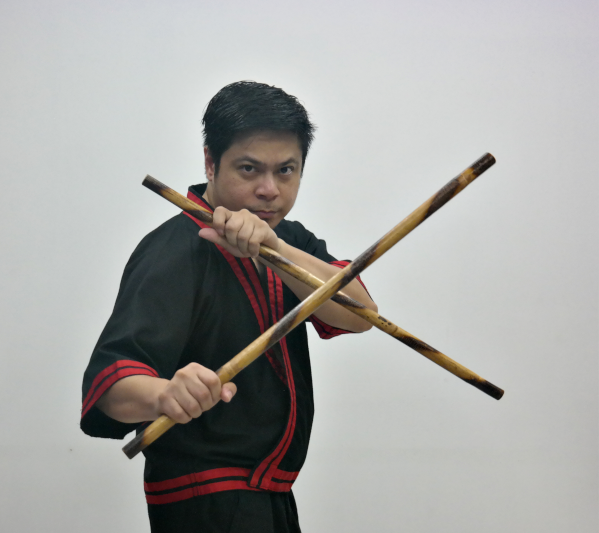
Also referred to Double sticks, Doble Olisi, Dalawang Sandata ( 2 weapons), it simulates a system of 2 weapons of equal length. Training with double weapons develops ambidexterity and coordination between the 2 limbs.
Two weapon of same length combinations that could be:
A. 2 sticks, usually a pair of rattan, a pair of bahi, a pair of kamagong (iron wood)
B. 2 swords, usually a pair of sword of the same type such as parang, bolo, ginunting, barong, etc...
C. 2 knife, usually a pair of dagger such as kutsilyo (knife), Daga (dagger), balisong (butterfly knife).
Training with double weapons develops ambidexterity and coordination between the 2 limbs.
We have a stronger limb and a weaker limb, being ambi-dexter means that your weaker hand can do what the stronger hand can do. This can be developed through proper training and coordination exercises and drills.
Some common reasons why training with double weapons are advantageous:
A. Fighting with double weapon is often more flowing and continuous as both hands are use for strike, blocks and counters
B. If only one weapon is used, you can change from one hand to the another which is a good strategy as most practioner is lopsided.
C. In tournament scenarios, you can change hand or side when your other hand is tired.
Common misconception about double weapon training are the following:
A. In reality it is hard to find one weapon, how much more 2?
This question is applicable if you think that you would need double weapons to defend yourself, however, if you can utilise one weapon hand and change from one hand to another with the weaker hand able to do what the stronger hand can do, then this becomes more of an advantage.
B. Dexterity vs Complementing
Why not just train your weaker hand to complement the stronger hand? Even though, double weapon objective is to develop dexterity, it also aids in developing the weaker hand to complement the stronger hand as it gives the practitioner the awareness and forcing the weaker hand to move and move thereby strengthening it.

